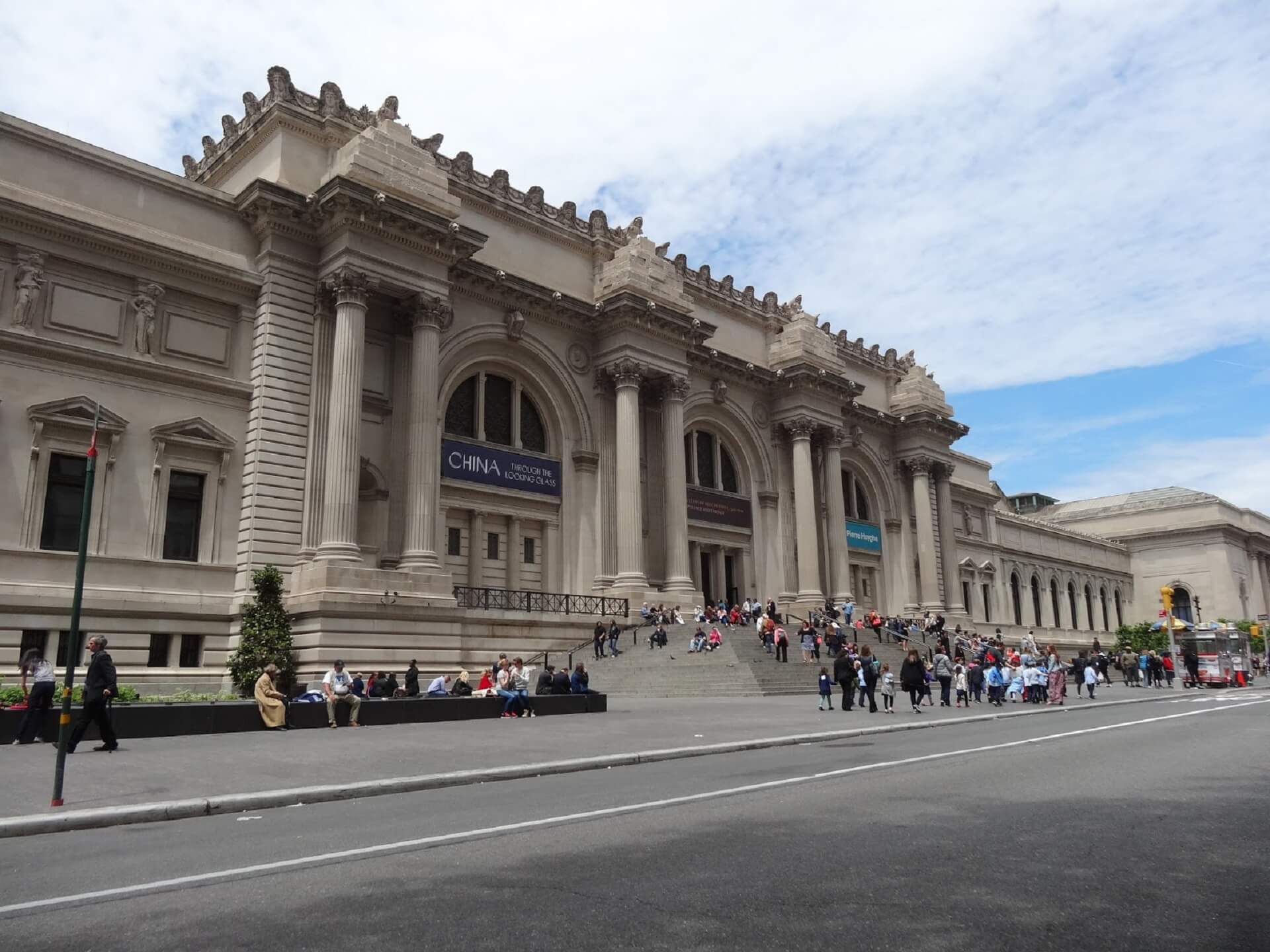The Metropolitan Museum of Art – “The Met”

An overview:
The Metropolitan Museum of Art of New York City, colloquially "the Met", is the largest art museum in the United States. With nearly 6.5 million visitors to its three locations last year, it was the fourth most visited art museum in the world according to The Art Newspaper. Its permanent collection contains over two million works, divided among 17 curatorial departments.
The main building at 1000 Fifth Avenue, along the Museum Mile on the eastern edge of Central Park in Manhattan's Upper East Side, is by area one of the world's largest art galleries. A much smaller second location, The Cloisters at Fort Tryon Park in Upper Manhattan, contains an extensive collection of art, architecture, and artifacts from medieval Europe.
In March of 2016, a third location along Madison Avenue was opened, extending the museum’s modern and contemporary art program.
The permanent collection consists of works of art from classical antiquity and ancient Egypt, paintings, and sculptures from nearly all the European masters, and an extensive collection of American and modern art. The Met maintains extensive holdings of African, Asian, Oceanian, Byzantine, and Islamic art. The museum is home to encyclopedic collections of musical instruments, costumes, and accessories, as well as antique weapons and armor from around the world. Several notable interiors, ranging from 1st-century Rome through modern American design, are installed in its galleries.

Historically speaking:
The Metropolitan Museum of Art's earliest roots dates back to 1866 in Paris, France, when a group of Americans agreed to create a "national institution and gallery of art" to bring art and art education to the American people.
The lawyer John Jay, who proposed the idea, swiftly moved forward with the project upon his return to the United States from France. Under Jay's presidency, the Union League Club in New York rallied civic leaders, businessmen, artists, art collectors, and philanthropists to the cause.
On April 13, 1870, The Metropolitan Museum of Art was incorporated, opening to the public in the Dodworth Building at 681 Fifth Avenue.
By the 20th century, the Museum had become one of the world's great art centers. In 1907, the Museum acquired a work by Auguste Renoir, and in 1910, The Met was the first public institution in the world to acquire a work of art by Henri Matisse.
The ancient Egyptian hippopotamus statuette that is now the Museum's unofficial mascot, "William," entered the collection in 1917. Today, virtually all of the Museum's 26,000 ancient Egyptian objects, the largest collection of Egyptian art outside of Cairo, are on display. By 1979, the Museum owned five of the fewer than 35 known paintings by Johannes Vermeer, and now The Met's 2,500 European paintings comprise one of the greatest such collections in the world. The American Wing now houses the world's most comprehensive collection of American paintings, sculpture, and decorative arts.
Pandemic stuff:
The recent COVID situation, naturally, had its effect on the museum, but it’s well on its path to recovery. The Met Fifth Avenue will reopen on August 29 for visitors and August 27 and 28 for Members. The Met Cloisters is scheduled to reopen on September 12.
So far, The Met’s following the official guidelines issued by the Center for Disease Control for increased health and safety procedures. To ensure that the museum is a safe environment for everyone, the museum management has mandated the following:
- Mandatory face coverings for everyone over the age of 2.
- Six feet of physical distance between people
- Mandatory temperature check at the door
- Mandatory usage of hand sanitizer dispensers located around the museum
- No large bags, as coat checking is currently inappropriate.



